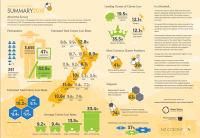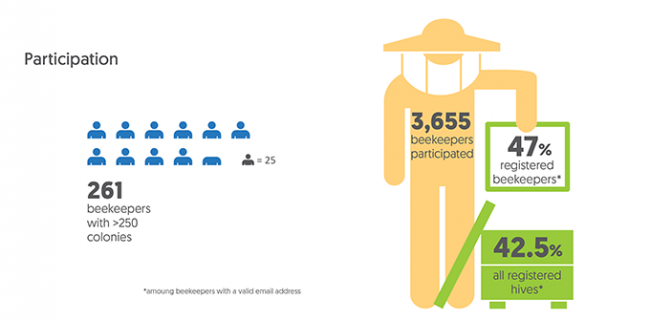Summary of results - 2018

Summary infographic
In a nutshell:
- Overall loss rates for winter 2018 were 10.2%. This figure is statistically indistinguishable from 2017, but higher than 2015 and 2016. Our analysis shows a statistically significant, positive time trend in overall loss rates.
- For winter 2018, the highest loss rates occurred in the Upper North Island and Middle South Island. Lowest overall loss rates were registered in the Lower North Island.
- Trend analysis indicates that overall loss rates have increased significantly for the Upper North Island and all three parts of the South Island. Overall loss rates have trended downward in the Lower North Island. Evidence for the Middle North Island is less conclusive, but some statistical tests suggest a statistically significant downward trend.
- Average loss rates were significantly higher for noncommercial beekeepers.
- Leading causes of colony losses include queen problems, suspected varroa and related complications, suspected starvation, and wasps
- Most commonly, queen problems were attributed to drone-laying queens and queen failure. Both problems were more pronounced among old queens than young queens.
- The Lower South Island reported less formal monitoring of varroa than other regions. Among beekeepers who treat varroa, Amitraz and Flumetrin are the most common treatments by a wide margin.






